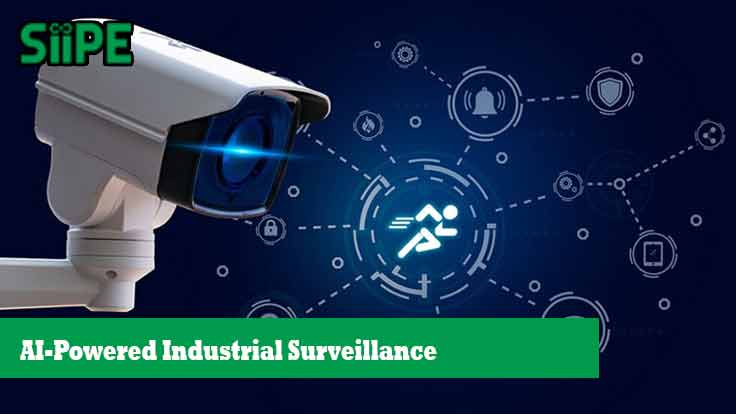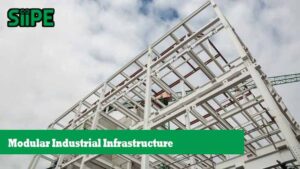In today’s hyper-connected industrial world, traditional security measures are no longer sufficient. As factories become more automated and complex, AI-powered industrial surveillance has emerged as a game-changer. This intelligent system not only protects assets but also optimizes operations and reduces risks.
But what exactly is AI-powered surveillance? And how does it revolutionize industrial environments?
Let’s dive deeper into how artificial intelligence is reshaping surveillance in the industrial sector.
What is AI-Powered Industrial Surveillance?
AI-powered industrial surveillance refers to the integration of artificial intelligence, computer vision, and machine learning into security camera systems and monitoring tools. These systems are designed not just to record, but to analyze video footage in real time, detect anomalies, and respond proactively.
Unlike traditional CCTV, which relies on human monitoring, AI-based surveillance uses algorithms to:
-
Detect unusual activities or patterns
-
Recognize faces, license plates, or employee uniforms
-
Identify safety violations
-
Send instant alerts for predefined triggers
As a result, industries can reduce response time and human error, while improving safety protocols.
Key Benefits of AI in Industrial Surveillance
Implementing AI surveillance provides a range of advantages beyond simple monitoring. Some of the main benefits include:
1. Real-Time Threat Detection
Thanks to machine learning, AI surveillance systems can detect unusual activities—such as unauthorized access or loitering—in real time. When such events occur, the system immediately alerts security personnel.
2. Increased Workplace Safety
In manufacturing facilities, safety is a priority. AI can identify when workers aren’t wearing protective gear or are entering restricted areas. By doing so, it helps prevent accidents and enforces compliance with safety regulations.
3. Reduced Operational Costs
AI reduces the need for round-the-clock human monitoring. It automates many tasks such as patrol scheduling, crowd detection, and incident logging—significantly lowering overhead costs.
4. Data-Driven Insights
Beyond surveillance, AI collects valuable data on movements, patterns, and behaviors. These insights can be used to improve workflow, manage crowd control, and even enhance employee productivity.
5. Remote Accessibility
Modern AI-powered surveillance platforms are cloud-based, allowing managers to monitor activity remotely from mobile devices. This is especially useful for overseeing multiple industrial locations.
Common Use Cases in Industrial Settings
AI surveillance systems have proven useful in various industrial scenarios. Here are some of the most impactful use cases:
a. Perimeter Security and Intrusion Detection
Factories often house expensive equipment and materials. AI-enabled cameras with motion detection and infrared capabilities can protect the perimeter 24/7.
b. Fire and Smoke Detection
Through thermal imaging and pattern recognition, AI systems can detect smoke or fire early, even before alarms are triggered. This early detection can save lives and reduce property damage.
c. Equipment Monitoring
Some AI surveillance systems can also monitor the condition of machinery. For instance, unusual vibrations or overheating may indicate a malfunction, prompting maintenance before breakdown occurs.
d. Traffic and Logistics Control
In large-scale industrial zones, managing vehicle traffic is a challenge. AI cameras can monitor truck movements, identify congestion points, and streamline vehicle flow at loading docks.
e. Employee Behavior Analysis
Although it sounds intrusive, analyzing patterns of employee movement can highlight inefficiencies or potential hazards. For example, if workers frequently use an unsafe route, management can redesign pathways or provide additional signage.
Integration with Other Smart Systems
AI surveillance works best when integrated with other smart factory systems. For instance:
-
Access control systems can use facial recognition for seamless employee check-in.
-
IoT sensors can collaborate with cameras to trigger visual alerts when specific thresholds are crossed.
-
AI dashboards can correlate surveillance data with production KPIs for deeper operational insights.
These integrations allow factories to evolve into intelligent ecosystems, where every process is interconnected and optimized.
Privacy and Ethical Considerations
While AI-powered surveillance offers many benefits, privacy concerns must be addressed. Industries must ensure that:
-
Surveillance data is stored securely
-
Access is limited to authorized personnel
-
Employees are informed and consent to monitoring where required
-
Systems comply with regional privacy regulations (e.g., GDPR)
Transparency builds trust and ensures ethical implementation of surveillance technology.
Challenges in Implementation
Despite its potential, several challenges can arise when deploying AI surveillance in industrial zones:
-
High Initial Investment: The cost of cameras, servers, software licenses, and system integration can be significant.
-
Technical Expertise: Operating and maintaining AI systems requires skilled personnel or managed services.
-
False Positives: AI algorithms need constant fine-tuning to avoid triggering false alerts.
-
Legacy Integration: Upgrading older factories to smart surveillance can be complex and time-consuming.
To mitigate these issues, companies should start with pilot programs and scale gradually.
The Future of AI Surveillance in Industry
As AI technology evolves, industrial surveillance will become even more predictive and autonomous. Future systems will:
-
Anticipate risks before they occur using predictive analytics
-
Communicate directly with autonomous robots or drones
-
Integrate with environmental sensors to ensure sustainability
-
Offer voice-assisted command centers using natural language processing
Furthermore, edge computing will reduce latency, allowing video data to be processed locally for faster response times.
Ultimately, AI-powered surveillance will not just observe, but intelligently manage and protect entire industrial operations.
AI-powered industrial surveillance is revolutionizing how factories approach security and operations. It enhances safety, reduces costs, and provides actionable insights. When implemented ethically and efficiently, this technology becomes a powerful ally in building the smart factory of the future.
By adopting AI surveillance today, industries can create safer, smarter, and more sustainable work environments for tomorrow.











